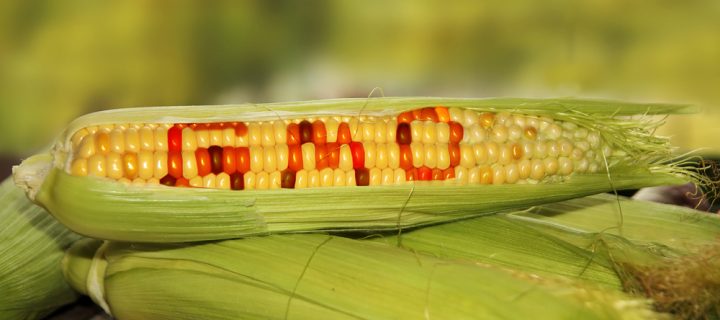GMO foods might be harmful for your health but they could also contribute towards more sustainable food worldwide.
In some groups, the term “GMO foods” is tossed around in the same vein as pesticides, nuclear waste, that trash island the size of Texas now in the middle of the ocean, and other things that go bump in the night, destined to do us much harm if left unattended without substantial parental supervision. It does sound daunting to imagine scientists curating the ideal piece of corn for your plate within the depths of a secured lab someplace in upstate New York. The reality, however, might not be so bad.
Genetically modified foods, or GMOs are now a solid part of our daily diet in North America. While controversial, they could be keys that help sustain humanity in a changing world, in the decades to come.
What are these edible beasts and why do people fear them? What’s the good, the bad, and the ugly, in a short recap you can read in about five minutes?
Here’s a quick run down on the pros and cons of genetically modified foods and what you should know as a consumer in order to ease your mind and help keep you informed.
What are genetically modified foods?
Every plant and animal contains genetic code in the form of DNA that holds specific instructions on how that organism will develop, exist, and reproduce. Scientists have been discovering more and more through analyzing DNA, learning about which structural elements may contribute to the development of diseases and conditions in our lives. When an organism is genetically modified, part of its DNA is changed using technology. Genetic engineering can cut out unwanted parts of an organism’s genetic code and replace this with a different piece that could be more beneficial.
Genetically modifying humans is obviously highly controversial but when it comes to our food, the situation can be a little more cut and dry. Check it out.
GMOs: the cons
They might increase resistance to antibiotics around the world.
Antibiotics have been with us since the late 1920s, (and perhaps earlier, without us knowing it), helping us fight off infections. Superbugs are on the rise, however, posing danger. These are bacteria that are resistant to antibiotics, meaning antibiotics don’t kill them off. When new DNA is inserted into a plant some reports say scientists add in cells resistant to antibiotics. This is because antibiotics are used to kill off any plant cells that didn’t take up the new DNA successfully.
Related: Locusts can sniff out cancer: study
These antibiotic-resistant genes go into your body when you eat GMO foods and you excrete them once your body is done with them. In this way, the antibiotic-resistant genes make their way into the world’s sewer systems along with all the other goop and goo we produce.
In a nightmare scenario, some say these genes can potentially be absorbed into some kind of harmful bacteria being harbored underground with the Ninja Turtles, creating a new super-bacteria that could eventually kill the global population through rampant staph infections. Thankfully, most experts agree this is unlikely. But still…
They might cause increased allergic reactions.
When new DNA is spliced into an organism, it’s possible that people could have more allergic reactions to their food. For example, if some attractive part of pine nut DNA is intertwined with corn DNA, a person who is allergic to pine nuts and who eats the new corn plant could potentially have an unexpected allergic reaction to their corn even if they aren’t normally allergic to this food. This type of thing has happened when DNA from Brazil nuts was combined with a soybean plant, rendering the soybean dangerous for consumption for those with nut allergies.
GMOS: the pros
They can be cheaper to grow.
Amidst the drawbacks there are several benefits to altering the genetics of human food. GMO foods are often made to be easier to grow and more resistant to heat and drought. This means they can often be grown at a lower cost to farmers and consumers compared with traditional crops.
They can pack in more nutrition per bite.
In addition, GMO foods can also be constructed with a higher nutrient content, increasing things like vitamin C, folate, and beta-carotene. In places where food is sometimes at a premium, as in some countries in Africa, this is a definite win when it comes to human health.
They can reduce the need for pesticides.
Some GMO plants are also more resistant to weed killers. Under the right circumstances, this can lead to a reduced use of pesticides with proper regulation.
The benefits of genetically modified foods are debatable and a healthy discussion with objective points of view can possibly be the best way forward. Viewing scientific involvement in nature with skepticism is health. It’s good to keep in mind that change is sometimes good.
photo credits: Carlos Amarillo/Shutterstock.com












